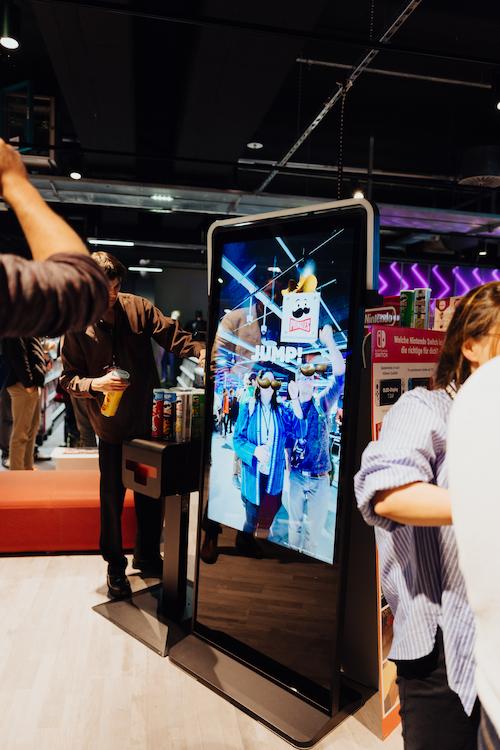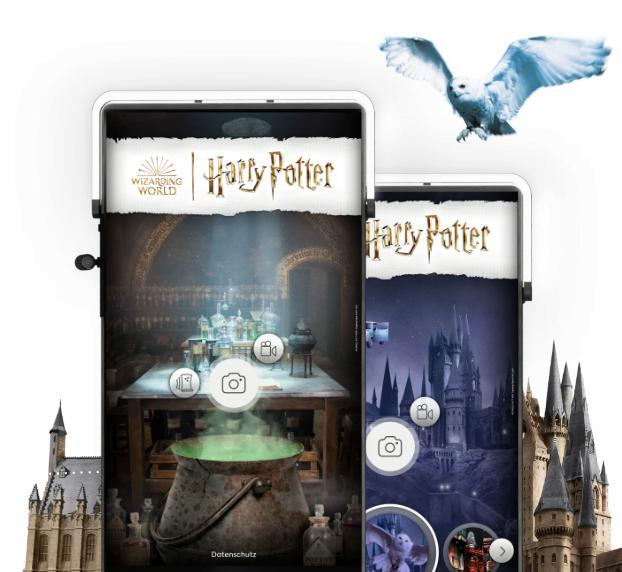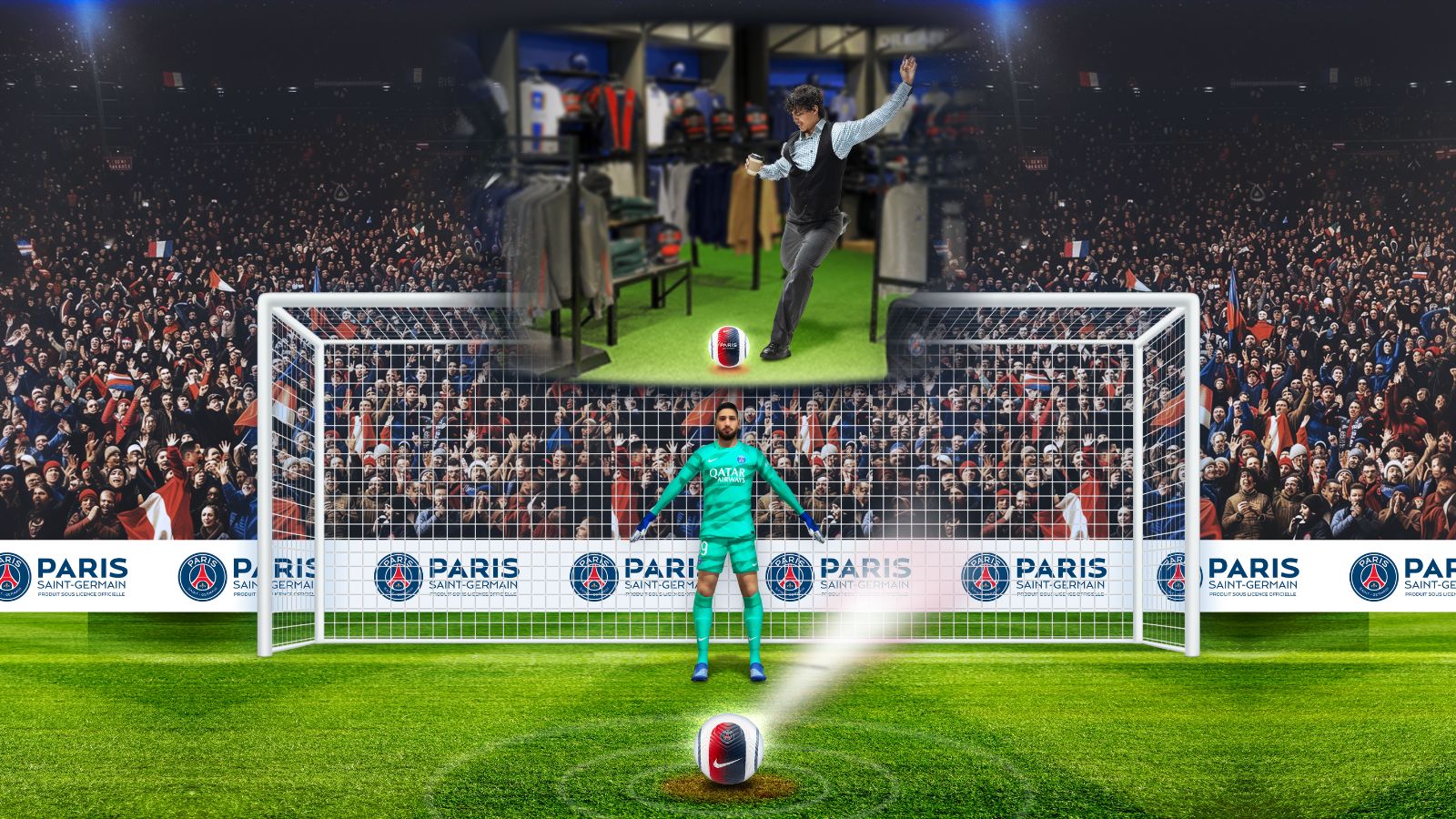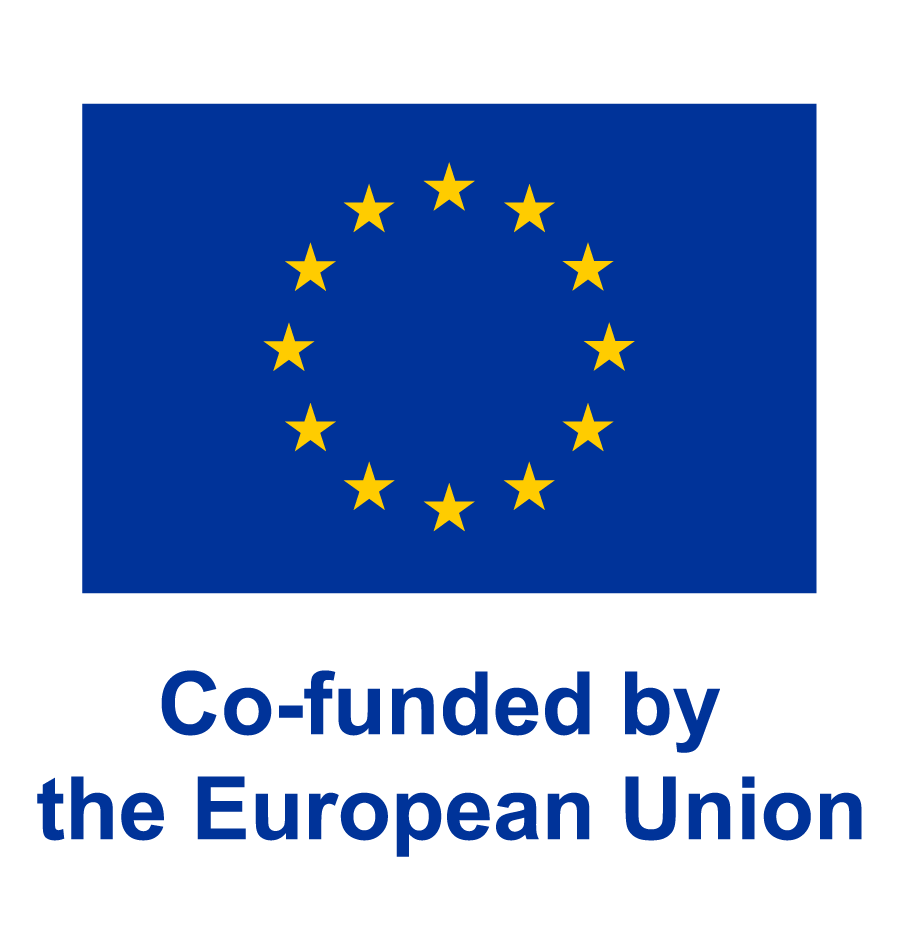Experiential marketing and augmented reality (AR) are the two important terms that have close and strong connections with each other for years. Therefore as an AR company that has active operations regarding both terms, we would like to provide information about this connection through our article.
In order to indicate this relationship, we first look at the definitions of experiential marketing as well as its benefits and continue with augmented reality experiential marketing to also specify how SENSAPE aligns with AR experiential marketing.
Before delving into augmented reality experiential marketing, we will highlight the definitions of experiential marketing in the following section.
What is Experiential Marketing?
As mentioned, experiential marketing has different definitions and we will indicate these definitions in this section.
Experiential marketing has been studied through many publications for more than 40 years. In this section, you can find the definitions of experiential marketing made through different researches and studies around the world.
The concept of experiential in marketing was introduced by Holbrook and Hirschman (1982) that highlights its focus on consumer’s experiences, feelings, and enjoyment. They emphasized how experiential marketing involves engaging consumers through various aspects, including playful activities and aesthetic enjoyment.
Meaning of Experiential Marketing
According to Kavran and Trstenjak (2021), experiential marketing in its broadest scope was first discussed by Schmitt (1999) and it is defined as the view that consumers have about the firm after they engage with their products and purchase them. Over the years, many definitions have been given for experiential marketing by various researchers.
You-Ming (2010) defines experiential marketing as a mode of communication that mainly deepens the emotional connection of the customers. Wood (2009) proposed that the experience must be crucial and memorable to become experiential marketing.
According to Davey et al. (2024) experiential marketing:
• Is a clearly differentiated but interconnected marketing strategy
• Uses intentional, individual, emotion-based experience to make an impact
• Includes the connection between brand and user(s)
• Allows immersion with various brand and message elements
• Builds strongly maintained associations towards the brand through message development
• Strengthens the relevance of the brand in memory
• Influenced by the user’s ability and willingness to engage
AR solutions powered by SENSAPE integrate physical and virtual elements, enabling users to interact with brands in real time, rather than just consume content. You can contact us to activate your project through impactful experiential marketing: SENSAPE contact form
After indicating the definitions of experiential marketing, it is also important to mention its considerable benefits in the next section.

4 Benefits of Experiential Marketing
In this section, we will highlight essential benefits of experiential marketing.
Experiential marketing makes various contributions to businesses and we would like to indicate 4 of these contributions for you. 4 benefits of the experiential marketing are as follows:
• Customers are eager to spend more on events or products that will enrich them with new experiences (Schmitt, 2010).
• Unlike traditional marketing, which indicates functional advantages, experiential marketing interacts with customers on emotional levels, generating unique and unforgettable experiences (Hwang and Seo, 2016; Schmitt, 1999).
• Experiential marketing provides consumers with memorable experiences through an integrated marketing approach with components supporting each other (Schmitt, 1999).
• It offers businesses a competitive advantage and a positive consumer experience is strategically crucial for a business (Schmitt, 1999; Maklan and Klaus, 2011; Dumitrescu et al., 2012).
After looking into definitions and benefits of experiential marketing in the previous section, we will focus more on AR experiential marketing in the following sections.
What is Augmented Reality (AR) Experiential Marketing?
Similar to the previous sections, we first emphasize the descriptions of AR experiential marketing before proceeding with its benefits.
Popularity and significance of augmented reality experiential marketing is continuing to grow in the global competitive markets similar to augmented reality event marketing. Therefore the focus of the researchers and professionals on this area is also increasing especially for the last several years. In this section, we highlight different perspectives on AR experiential marketing.
According to Carmingniani et al. (2011), the use of the first AR experiential marketing application went live in 2008, when a global car brand created a 3D model of their car, which would appear on the screen when the user positioned a white paper sheet in front of the camera.
Since 2008, numerous activations about AR business innovation models have arisen (Javornik, 2014). AR experiential marketing user experience leads to a crucial positive change in the user perception towards the specific offering by the brand, which in return generates a higher purchase intention and satisfaction through the changes in consumers’ behavior.
Meaning of Augmented Reality Experiential Marketing
Kazmi et al. (2021) defines AR's role in experiential marketing as offering integrated consumer experiences that go beyond service delivery, considering the whole user journey. On the other hand, Eru et al. (2022) describes augmented reality experiential marketing as a strategic marketing approach that combines virtual and real-world elements to advance business goals and enrich consumer experiences, highlighting it as a game-changing innovation in the marketing field.
SENSAPE solutions elevate AR experiential marketing to maximize consumer engagement, it enables businesses to deliver immersive AR event marketing that today’s audiences expect. You can contact us to immerse your project through influential AR experiential marketing solutions: SENSAPE contact form
After providing experiential AR marketing descriptions, we will continue with its benefits in the following section.

9 Benefits of AR Experiential Marketing
This section is designed to specify particular benefits of experiential AR marketing.
After indicating the definitions made for augmented reality in experiential marketing, it is essential to disclose some of the substantial advantages that AR experiential marketing delivers for the businesses to gain competitive edge. Here are the 9 of these advantages:
• AR experiential marketing empowers the ability of businesses to attract consumer attention, affect buying decisions, and encourage innovative engagement (Irgui et al., 2024).
• Employs the power of digital innovation to build lasting and meaningful relationships with their target audience (Irgui et al., 2024).
• Enables customers to engage with virtual items, harmoniously merging physical and digital environments and maximizing the shopping experience to make it enjoyable, unforgettable, and thrilling (Kim et al., 2024).
• Not only advances practical usefulness but also increases the overall consumer experience, potentially enriches loyalty and satisfaction (Haumer et al., 2020).
• Allows consumers to get more information and encourages a deeper engagement, which results in highly realistic experiences and positively engaging consumers (Kim et al. 2024).
• Enriches the consumer's experiential value through personalized AR experiences tailored to meet individual consumer needs and preferences (Javornik, 2016; Sung, 2021).
• Goes beyond its role as a promotional instrument to build a brand-customer relationship, and due to this many companies use it to promote their new product as well as engaging with their current customer with their existing product (Jin and Yazdanifard, 2015).
• Increases revenues by encouraging demand by the creation of “wow” factor (Jin and Yazdanifard, 2015)
• Has a positive impact on brand equity through the aspects of brand loyalty, brand awareness, and brand associations (Haumer et al., 2020).
After indicating the definitions and benefits of AR experiential marketing, it is also important to look into how SENSAPE uses AR experiential marketing in the next section.

How is Augmented Reality (AR) Used in Experiential Marketing?
In this last section, we will specify how SENSAPE makes use of AR as an impactful experiential marketing tool for unique AR consumer experience.
SENSAPE pioneers smart and eye-catching technologies that combine augmented reality (AR) and artificial intelligence (AI). These innovative technologies are developed to strengthen physical environments with virtual interactions, which is an essential component of experiential marketing.
3 key alignments between SENSAPE solutions and experiential AR marketing include:
1. Unique AR Consumer Experience:
SENSAPE’s AR solutions enable brands to create interactive environments where users can become part of their favorite team by virtually posing with the players through Allstars solution, step into immersive digital worlds through Phantastic Portal solution, actively take part in gesture-controlled gaming experiences through AR Games solution, access AR experience directly through a browser via WebAR solutions for marketing, and virtually try products through TryOn solution in real-world settings, such as events and fairs.
2. Immersive Activations:
From trade shows to various types of events, SENSAPE installations can be implemented to attract attention from the visitors through unique AR consumer experiences and dynamic gamified content which make brand interactions more immersive.
3. Smart Attention Systems:
Through AI-driven eye tracking and audience engagement analytics, SENSAPE allows brands to customize experiences in real time and enhance personalization and emotional connection, which is crucial for influential experiential marketing.
Let’s talk about the possibilities of AR and do something great together.
Contact SENSAPE:
Email: hello@sensape.com
Phone: +49 341 392 98 552
WhatsApp: +49 173 3830500
Contact form: Connect SENSAPE
References
Holbrook, M. B., & Hirschman, E. C. (1982). The experiential aspects of consumption: Consumer fantasies, feelings, and fun. The Journal of Consumer Research, 9(2), 132–140. https://www.jstor.org/stable/2489122
Kavran, A. K., & Trstenjak, B. (2021). The Impact of Augmented Reality Experiential Marketing on Tourist Experience Satisfaction. In Handbook of Research on Applied AI for International Business and Marketing Applications (pp. 432-454). IGI Global. https://doi.org/10.4018/978-1-7998-5077-9.ch021
Schmitt, B. (1999). Experiential marketing. Journal of marketing management, 15(1-3), 53-67. https://doi.org/10.1362/026725799784870496
You-Ming, C. (2010). Study on the impacts of experiential marketing and customers’ satisfaction based on relationship quality. International Journal of Organizational Innovation 3(1): 189–209. https://api.semanticscholar.org/CorpusID:56030234
Wood, E. H. (2009). Evaluating event marketing: Experience or outcome?. Journal of Promotion Management, 15(1-2), 247-268. https://doi.org/10.1080/10496490902892580
Davey, A., Sung, B., & Butcher, L. (2024). Revisiting experiential marketing: A Delphi study. Journal of Brand Management, 31(1), 16-37. https://doi.org/10.1057/s41262-023-00333-w
Schmitt, B. (2010). Experience marketing: Concepts, frameworks and consumer insights. Foundations and Trends® in Marketing, 5(2), 55-112. https://doi.org/10.1561/1700000027
Hwang, J., & Seo, S. (2016). A critical review of research on customer experience management: Theoretical, methodological and cultural perspectives. International Journal of Contemporary Hospitality Management, 28(10), 2218-2246. https://doi.org/10.1108/IJCHM-04-2015-0192
Maklan, S., & Klaus, P. (2011). Customer experience: are we measuring the right things?. International Journal of Market Research, 53(6), 771-772. https://doi.org/10.2501/IJMR-53-6-771-792
Dumitrescu, L., Stanciu, O., Tichindelean, M., & Vinerean, S. (2012). The importance of establishing customer experiences. Studies in Business and Economics, 7(1), 56-61. https://ideas.repec.org/a/ibn/ijmsjn/v11y2020i1p100.html
Carmigniani, J., Furht, B., Anisetti, M., Ceravolo, P., Damiani, E., & Ivkovic, M. (2011). Augmented reality technologies, systems and applications. Multimedia tools and applications, 51, 341-377. https://doi.org/10.1007/s11042-010-0660-6
Javornik, A. (2014). [Poster] classifications of augmented reality uses in marketing. In 2014 IEEE international symposium on mixed and augmented reality-media, art, social science, humanities and design (ISMAR-MASH'D) (pp. 67-68). IEEE. http://doi.org/10.1109/ISMAR-AMH.2014.6935441
Kazmi, S. H. A., Ahmed, R. R., Soomro, K. A., Hashem, E. A. R., Akhtar, H., & Parmar, V. (2021). Role of augmented reality in changing consumer behavior and decision making: Case of Pakistan. Sustainability (Basel), 13(24). https://doi.org/10.3390/su132414064
Eru, O., Topuz, Y. V., & Ruziye, C. O. P. (2022). The Effect of Augmented Reality Experience on Loyalty and Purchasing Intent: An Application on the Retail Sector. Sosyoekonomi, 30(52). https://doi.org/10.17233/sosyoekonomi.2022.02.08
Irgui, A., Qmichchou, M., & El Haraoui, I. (2024). A Systematic Review of Augmented Reality Experiential Marketing: Conceptual Framework and Research Agenda. AI and Data Engineering Solutions for Effective Marketing, 87-113. http://doi.org/10.4018/979-8-3693-3172-9.ch005
Kim, J. H., Kim, M., Yoo, J., & Park, M. (2024). Augmented reality in delivering experiential values: Moderating role of task complexity. Virtual Reality (Waltham Cross), 28(1), 19. https://doi.org/10.1007/S10055-023-00896-8
Haumer, F., Kolo, C., & Reiners, S. (2020). The impact of augmented reality experiential marketing on brand equity and buying intention. Journal of Brand Strategy, 8(4), 368-387. https://doi.org/10.69554/XHBQ2723
Javornik, A. (2016). Augmented reality: Research agenda for studying the impact of its media characteristics on consumer behaviour. Journal of Retailing and Consumer Services, 30, 252 261. http://doi.org/10.1016/j.jretconser.2016.02.004
Sung, E. C. (2021). The effects of augmented reality mobile app advertising: Viral marketing via shared social experience. Journal of Business Research, 122. 75-87. https://doi.org/10.1016/j.jbusres.2020.08.034
Jin, O., & Yazdanifard, R. (2015). The review of the effectivity of the augmented reality experiential marketing tool in customer engagement. Global Journal of Management and Business Research, 15(8), 13-17. https://journalofbusiness.org/index.php/GJMBR/article/view/1837
.webp)













